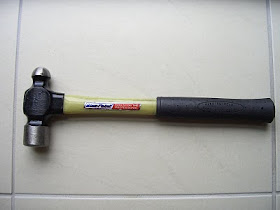It's not that long ago that I spent more time in the garage
As a kid, mates used to congregate at our garage because I was always busy working/playing on something, from pushbikes to 'crossers, sometimes even Dad's '61 Triumph. That was me, it was where I learnt the hard way about taking things apart, and trying to put them back together. And things didn't exactly change as I got older.
I could stand for hours staring at my bikes, literally in freezing conditions. I didn't care - a thick padded shirt on top of my overalls, a fresh brew and I was set for the evening. Procrastinating, problem solving, admiring and so on. To the outsider this maybe viewed as weird and boring, but to the enthusiast (ooh that sounds lame) it's a reason for living.
So should we feel bad about this need for alone time, being at one with machinery? No way! We only pass this way once and it should be enjoyed as much as is humanly possible. If that involves deep thought about the next repair, ride or restoration, then think away.














